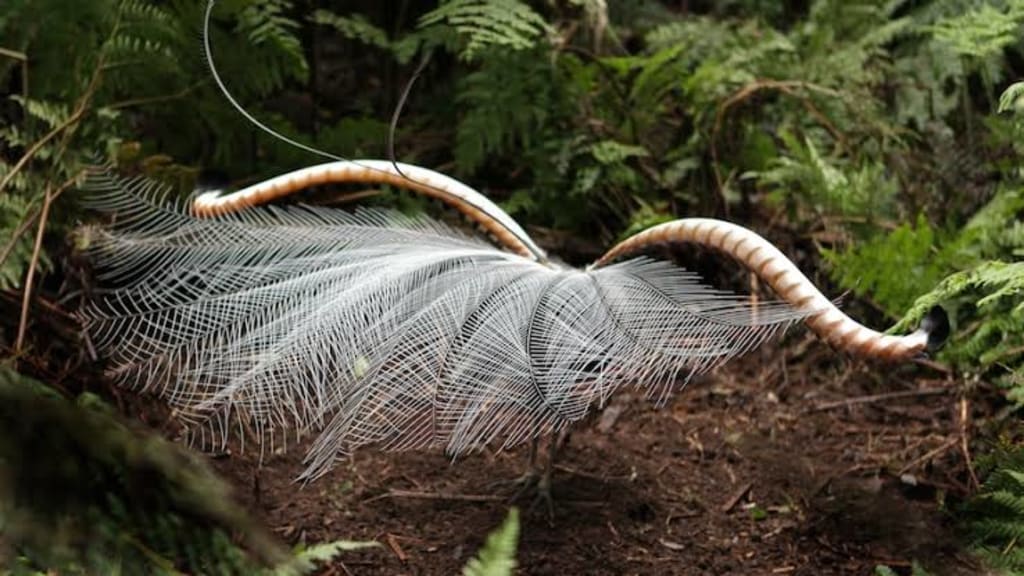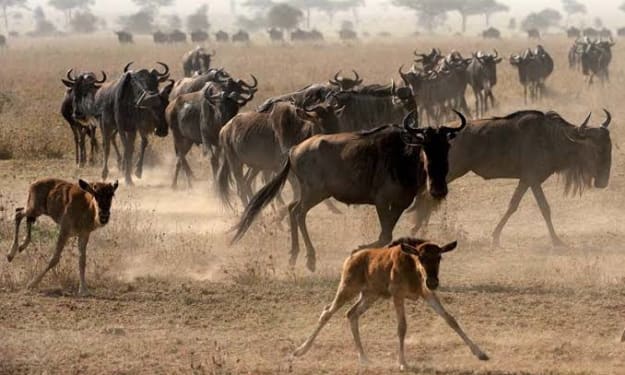The Hidden World of Animal Communication
From Honey Bee Dances to Elephant Rumbles

Animals have developed a variety of communication methods to interact with each other, find food, warn of danger, and reproduce.
These methods can be as simple as a bird's call or as complex as a honey bee's dance.
Exploring the hidden world of animal communication reveals how species use different signals to convey important information and how these behaviors have evolved.
Communication Methods in the Animal Kingdom
Animal communication can take many forms, including visual signals, sounds, chemical cues, and tactile interactions. Each method is tailored to the needs and environment of the species.
Visual Signals: Many animals use visual displays to communicate. Peacocks, for example, spread their colorful feathers to attract mates, while certain fish change colors to signal aggression or submission.
Auditory Signals: Sound is a common communication tool. Birds sing to mark territory and attract mates, while whales use complex vocalizations to communicate over long distances in the ocean.
Chemical Signals: Chemical communication involves pheromones and other scent markers. Ants leave pheromone trails to guide other members of their colony to food sources.
Tactile Signals: Physical touch is used by some animals to convey messages.
Primates, for instance, groom each other to strengthen social bonds and communicate trust.
The Honey Bee Dance
One of the most fascinating examples of animal communication is the honey bee dance.
Honey bees use a unique dance language to inform their hive mates about the location of food sources.
Waggle Dance: When a foraging bee finds a rich source of nectar or pollen, it returns to the hive and performs the waggle dance.
The dance involves a series of movements that form a figure-eight pattern.
The direction of the waggle run indicates the direction of the food relative to the sun, while the duration of the waggle run indicates the distance.
Round Dance: If the food source is close to the hive, the bee performs a simpler round dance, which involves circling in one direction and then the other.
This tells other bees that food is nearby without providing specific directional information.
Elephant Rumbles
Elephants are known for their deep, rumbling vocalizations, which play a crucial role in their communication.
These rumbles are often so low in frequency that they can travel long distances and are sometimes below the range of human hearing.
Long-Distance Communication: Elephants use rumbles to communicate with other elephants several kilometers away. This is particularly useful in dense forests or savannas where visibility is limited.
Social Bonds: Rumbles help maintain social bonds within the herd. Female elephants and their calves stay in close contact using these sounds, ensuring that the group stays together.
Warning Signals: Elephants also use rumbles to warn each other of potential dangers, such as predators or human threats.
These signals can prompt coordinated group responses, such as defensive formations or migrations to safer areas.
The Importance of Animal Communication
Effective communication is essential for the survival and reproduction of many species.
It helps animals find mates, locate food, avoid predators, and establish social hierarchies.
Mating and Reproduction: Communication plays a vital role in courtship and mating rituals. Birds, for instance, use elaborate songs and dances to attract partners, while fireflies use bioluminescent signals to find mates.
Foraging and Hunting: Animals communicate to coordinate hunting and foraging activities. Wolves, for example, use vocalizations and body language to strategize during a hunt.
Social Structure: In social species, communication helps establish and maintain group hierarchies. Chimpanzees use facial expressions and vocalizations to assert dominance and maintain social order.
Threats to Animal Communication
Despite its importance, animal communication is under threat from various human activities.
Habitat Destruction: Deforestation, urbanization, and other forms of habitat destruction can disrupt the environments where animals communicate, making it difficult for them to find mates and food.
Noise Pollution: Increased noise from human activities, such as traffic and industrial operations, can interfere with the auditory signals animals rely on.
Marine mammals, like whales and dolphins, are particularly affected by underwater noise pollution from ships and sonar.
Climate Change: Changes in climate can alter the habitats and behaviors of animals, potentially disrupting communication patterns. For example, altered migration patterns due to climate change can affect the timing and location of animal communication signals.
Conservation Efforts
Protecting the communication systems of animals is crucial for their survival and the health of ecosystems.
Habitat Protection: Conserving natural habitats ensures that animals have the space and resources they need to communicate effectively. Protected areas and wildlife corridors can help maintain these vital environments.
Noise Regulation: Implementing regulations to reduce noise pollution, particularly in sensitive areas like oceans and wildlife reserves, can help preserve the integrity of animal communication.
Research and Monitoring: Ongoing research into animal communication can provide valuable insights into the needs of different species and inform conservation strategies.
Monitoring animal populations and their communication behaviors helps identify and mitigate threats.
Conclusion
The hidden world of animal communication is rich and varied, encompassing a wide range of signals and behaviors that are essential for survival.
From the intricate dances of honey bees to the powerful rumbles of elephants, these communication methods demonstrate the complexity and adaptability of nature.
Protecting these communication systems is vital for maintaining biodiversity and ensuring the continued survival of many species.
By understanding and conserving the ways animals communicate, we can help preserve the intricate web of life that sustains our planet.
About the Creator
Dibio Augustine
Professional Animal behavior writer. ❤️
Learn more about your favorite animal/pet behavior here 📚
Come with your dictionary 🥴






Comments
There are no comments for this story
Be the first to respond and start the conversation.